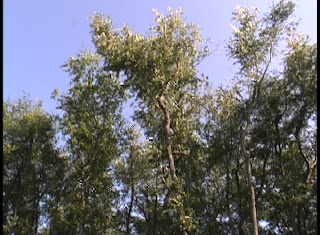
and yet I find it pleasing on quick glance. Why is that? It's a sketch from a set of quilt design ideas in one of my sketchbooks, and looking through them I was struck by this one.
When sketching, I thought about the strip quilt process -- sort of a loose log cabin, where the quilt is built up by strip sections rather than carefully measured squares -- and built up the drawing similarly.
There's no golden ratio or nice spiral here, and yet the proportions seem right. How do we judge that, internally? What... oh wait. Maybe there is a spiral shape - but it's in the shapes darkened, rather than the large-blocks-to-smaller-blocks that were the "spiral" of how I built up the drawing. So I somehow imposed a spiral after the initial drawing was laid out without really thinking about it. Cool.
(It also looks a little bit like Cape Cod, but the red shape at the top right would have to curve or be cut down a bit - Provincetown doesn't go that far into Cape Cod Bay!)
If I think too much about all this when sketching, the sketches turn out like engineering drawings. Neat, but without life. It's almost as if the aesthetic pleasure is diminished if the rules are adhered to too closely.
I wonder if that's measurable. Could an experiment be devised where subjects are asked to evaluate the pleasingness of a set of abstract shapes generated by computer to conform to strict proportional rules vs similar shapes that break those rules by some degree?
 I got an iPhone, which replaces several of the items I had been carrying with me everywhere: my iPod, small camera, and phone. The camera aspect leaves something to be desired, but does give me some flexibility to grab a shot when I see it. So my small travel camera is now in my desk drawer, and the small iPod in my gym bag.
I got an iPhone, which replaces several of the items I had been carrying with me everywhere: my iPod, small camera, and phone. The camera aspect leaves something to be desired, but does give me some flexibility to grab a shot when I see it. So my small travel camera is now in my desk drawer, and the small iPod in my gym bag.






























